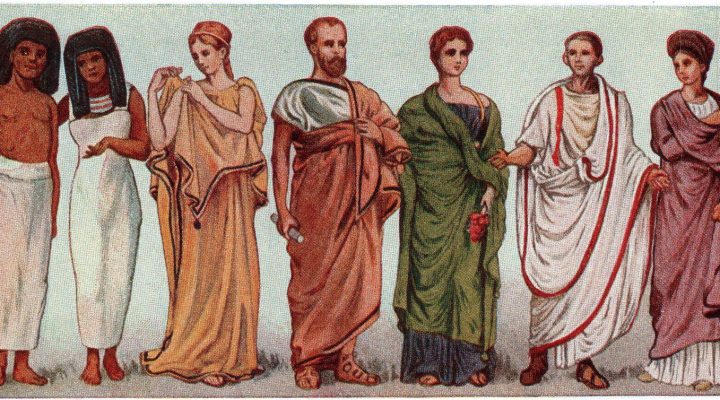For far too long the LGBTQ community has conceded Christianity to traditionalists and conservatives, allowing them to perpetuate the narrative that the Bible is clearly anti-LGBTQ and that being queer is a sin.
But the truth is that most of the world’s biblical scholars have long agreed that the traditional interpretations of a few obscure biblical texts used to fuel anti-LGBTQ sentiment for decades are incorrect, rooted in mistranslations, a lack of understanding of the ancient world and sheer prejudice rather than proper biblical interpretation.

Brandan Robertson
Here is a quick primer on what the Bible actually says about queer people.
To start, there is not a single verse from Genesis to Revelation that speaks of sexual orientation. Quite simply, this concept did not exist in the ancient world. The concept of sexual orientation — as an innate attraction toward the same sex, opposite sex, both or neither sexes — did not develop until the late 1800s. In many ancient cultures, men were permitted to have sex with anybody of any sex if they were of a lower social status.
This is why, for instance, in the Greco-Roman world of the New Testament it was common for men to have sex with their male slaves. However, this kind of sex was not an expression of love, but of exploitation, domination and unbridled lust, which is why we should not be surprised that the Apostle Paul condemns this practice in Romans 1:26, 1 Corinthians 6:9 and 1 Timothy 1:9 — passages often misinterpreted as condemnations of queer sex. Most of the men engaging in these exploitative sex acts were not queer at all, and the sex they were engaged in was not loving or consensual and thus bears no resemblance to modern queer relationships.
When we look at the condemnations from the Book of Leviticus, we find a similar situation. We’re told in Leviticus 18:1-3 this section of the Levitical Law was intended to keep the Hebrew people distinct from the “practices” of the Egyptians and Canaanites. We have very little evidence that sex between people of the same sex was common in either one of these cultures, but we do have evidence of sexual exploitation and perhaps even sex as an offering to pagan deities — although the existence of this practice is hotly debated among scholars.
‘Whatever the Egyptians and Canaanites were engaged in, it was nothing akin to modern, consensual same-sex relationships.”
What is clear is that whatever the Egyptians and Canaanites were engaged in, it was nothing akin to modern, consensual same-sex relationships and thus, whatever Leviticus is condemning is not relevant to modern queer people.
When Christians quote the story of the destruction of Sodom and Gomorrah from Genesis 19 as evidence of God’s judgment on queer people, they’re simply demonstrating they’ve never actually read the story. If you read the actual account, you’ll very clearly see that the sin of the men of Sodom was that they sought to gang rape foreigners, which based on our understanding of sex in the ancient world makes sense — this was an act of domination and cultural superiority, not a result of sexual attraction.
In fact, the book of Ezekiel explicitly interprets this story in this way. The Prophet Ezekiel writes, “Now this was the sin of your sister Sodom: She and her daughters were arrogant, overfed and unconcerned; they did not help the poor and needy” (Ezekiel 16:49) .
The sin of Sodom was their lack of concern for outsiders, despite their abundance of resources. It was not their “homosexuality.”
When it comes to the question of transgender people, there is not a single verse in the Bible that directly addresses them. Christians will sometimes quote Deuteronomy 22:5 which says, “A woman shall not wear a man’s apparel, nor shall a man put on a woman’s garment; for whoever does such things is abhorrent to the LORD your God.”
“There is no way to apply this Scripture to all people in all cultures for all time because what constitutes men’s clothing and women’s clothing differs dramatically.”
There are a few key things to remember when interpreting this passage.
First, what is defined as “man’s apparel” or a “woman’s garment” differs between cultures and eras. In the Middle Ages, men dressed in ways many today would consider quite feminine, for instance.
Second, these cultural laws in Deuteronomy were intended specifically for the Hebrew people as a means of preserving their culture. They were not intended to be a moral law for all people and all time. There is no way to apply this Scripture to all people in all cultures for all time because what constitutes men’s clothing and women’s clothing differs dramatically.
Some will appeal to Genesis 1:27, the account of God’s creation of man and woman, to suggest nonbinary or trans people do not actually exist. This interpretation, however, is out of sync with how many Jewish interpreters have long understood gender identity. The Talmud, an ancient account of rabbinic interpretation of the Hebrew Bible, notes there are at least eight different gender identities, including six that would be classified as nonbinary or transgender.
So while it is clear God did, in fact, create male and female, it has long been understood that God created a wide variety of other genders as well, and this diversity isn’t a sign of sin but a reflection of God’s beauty and creativity.
What should be clear by now is that using the Bible to justify anti-queer sentiment is a ridiculous endeavor, not rooted in an understanding of the history of the biblical world or of the development of the modern notions of sexuality and gender identity. Any honest interpreter of Scripture must necessarily conclude there are no relevant prohibitions of queer people or our lives and love anywhere in Scripture.
But the Bible is stunningly clear on one thing: Loving your neighbor is the highest and most important command. (Leviticus 19:18 and Matthew 22:39) So for Pride month, and indeed every month, let’s focus on doing that.
Brandan Robertson is an author, activist and public theologian working at the intersections of spirituality, sexuality and social renewal. A prolific writer, he is the author of nine books on spirituality, justice and theology, including the INDIES Book of the Year Award Finalist True Inclusion: Creating Communities of Radical Embrace. Robertson received a bachelor of arts degree in pastoral ministry and theology from Moody Bible Institute, a master of theological studies degree from Iliff School of Theology, and a master of arts in political science and public administration from Eastern Illinois University. He is currently pursuing a Ph.D. in biblical studies from Drew University. He currently resides in New York City.
Related articles:
My quest to find the word ‘homosexual’ in the Bible | Opinion by Ed Oxford
Why being transgender is not a sin | Opinion by Mark Wingfield


